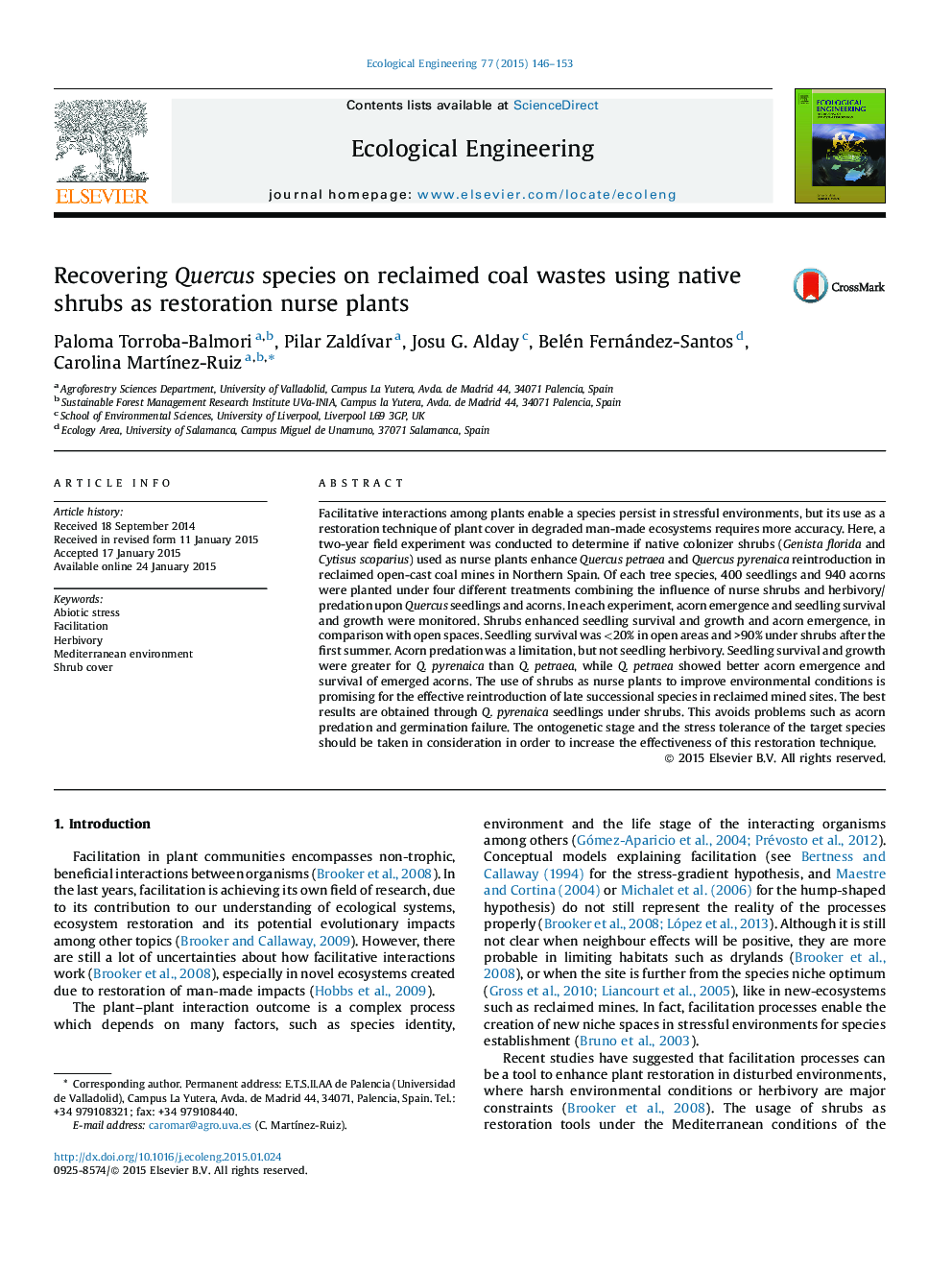| Article ID | Journal | Published Year | Pages | File Type |
|---|---|---|---|---|
| 4389259 | Ecological Engineering | 2015 | 8 Pages |
•Nurse shrubs and grazing effect on reforested Quercus spp. were tested in coal mines.•Shrubs enhanced seedling survival and growth and acorn emergence of Quercus spp.•Acorn predation was a limitation, but not seedling herbivory.•Differences in the response of Q. pyrenaica and Q. petraea were found.•Facilitation processes are promising for the late successional species introduction.
Facilitative interactions among plants enable a species persist in stressful environments, but its use as a restoration technique of plant cover in degraded man-made ecosystems requires more accuracy. Here, a two-year field experiment was conducted to determine if native colonizer shrubs (Genista florida and Cytisus scoparius) used as nurse plants enhance Quercus petraea and Quercus pyrenaica reintroduction in reclaimed open-cast coal mines in Northern Spain. Of each tree species, 400 seedlings and 940 acorns were planted under four different treatments combining the influence of nurse shrubs and herbivory/predation upon Quercus seedlings and acorns. In each experiment, acorn emergence and seedling survival and growth were monitored. Shrubs enhanced seedling survival and growth and acorn emergence, in comparison with open spaces. Seedling survival was <20% in open areas and >90% under shrubs after the first summer. Acorn predation was a limitation, but not seedling herbivory. Seedling survival and growth were greater for Q. pyrenaica than Q. petraea, while Q. petraea showed better acorn emergence and survival of emerged acorns. The use of shrubs as nurse plants to improve environmental conditions is promising for the effective reintroduction of late successional species in reclaimed mined sites. The best results are obtained through Q. pyrenaica seedlings under shrubs. This avoids problems such as acorn predation and germination failure. The ontogenetic stage and the stress tolerance of the target species should be taken in consideration in order to increase the effectiveness of this restoration technique.
